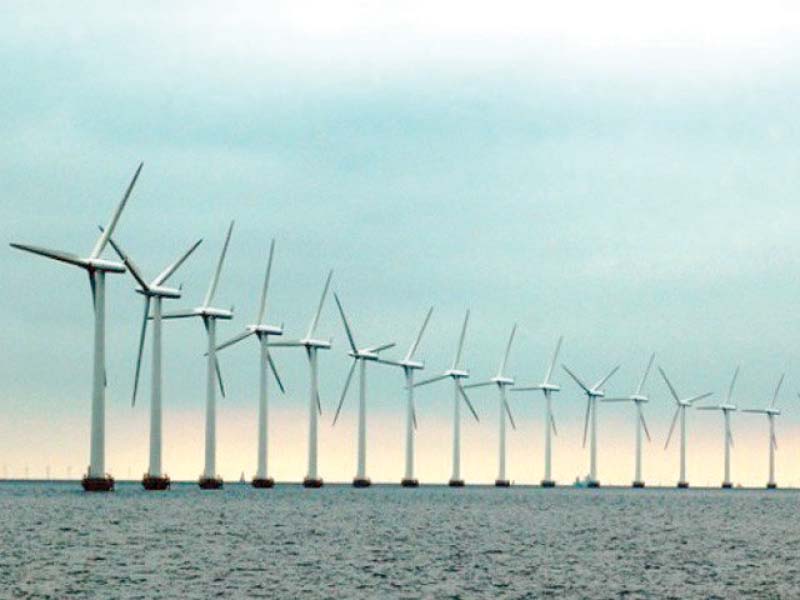
In 2006, the then government had set the target of increasing the share of wind energy to 5% in the total energy mix by 2030, according to the Alternative Energy Development Board’s (AEDB) website.
Pakistan already spending 8% budget on climate, says minister
The National Electric Power Regulatory Authority (Nepra), the power sector regulator, recently reported that the country produced 141.6 gigawatt-hours (141,600MW) of wind energy in September 2017, which is 0.46 percentage point higher than 82.63 gigawatt-hours (82,630MW) in the same month of previous year.
The increase in clean renewable energy production is a must for protecting the environment, which is deteriorating fast due to carbon emissions from thermal power houses which run on fuels like furnace oil and coal.
Estimates suggest that every single dollar being spent on finding oil and gas deposits globally is contributing to deteriorating the environment.
According to the National Forum for Environment and Health (NFEH), Sindh, owing to the presence of a huge wind corridor in Gharo-Jhimpir area, has achieved installed capacity of 788.5MW of wind-based power from 15 projects that have entered the operational phase.
Moreover, nine more projects with cumulative generation capacity of 445MW have achieved financial close and are in various stages of construction at present.
“The AEDB is encouraging development of another 10 wind energy projects in the province (Sindh) having expected cumulative capacity of 1,200MW, which would be constructed by 2019-20 through competitive bidding of tariff after shifting from the current regime of upfront or cost-plus tariff,” it said.
Nepra has announced an upfront tariff of 13.52 US cents per kilowatt-hour (levelised) dated April 24, 2013 for wind power projects, according to the AEDB.
Centre hides long-term CPEC plan from provinces
Pakistan’s big business houses are diversifying their investments into the renewable energy source due to the incentives being offered, including high and guaranteed rate of return in euro and dollar parity.
Nepra has allowed 17% rate of return on investments in wind power projects in the upfront tariff. Other incentives include protection against political risk, availability of carbon credits, duty-free import of equipment, exemption from income, withholding and sales tax, repatriation of equity along with dividends and permission to issue corporate registered bonds.
Published in The Express Tribune, November 18th, 2017.
Like Business on Facebook, follow @TribuneBiz on Twitter to stay informed and join in the conversation.

















COMMENTS (1)
Comments are moderated and generally will be posted if they are on-topic and not abusive.
For more information, please see our Comments FAQ